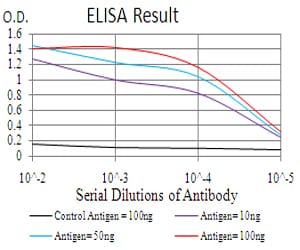
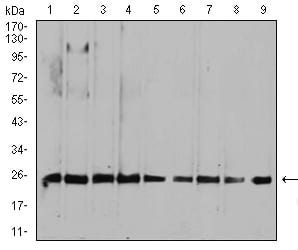
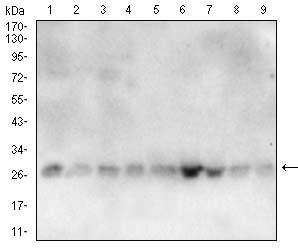
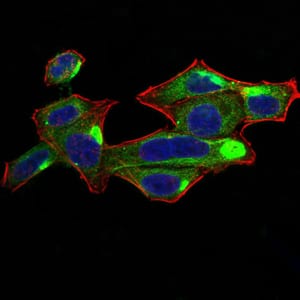
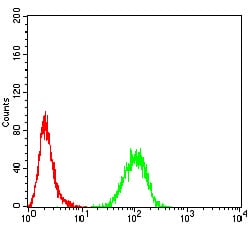
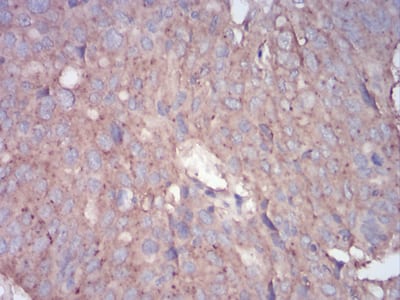
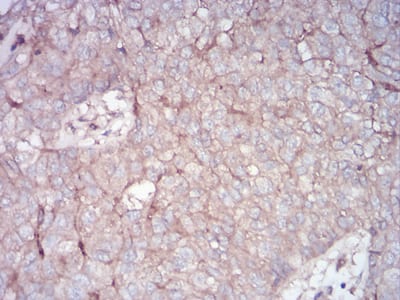
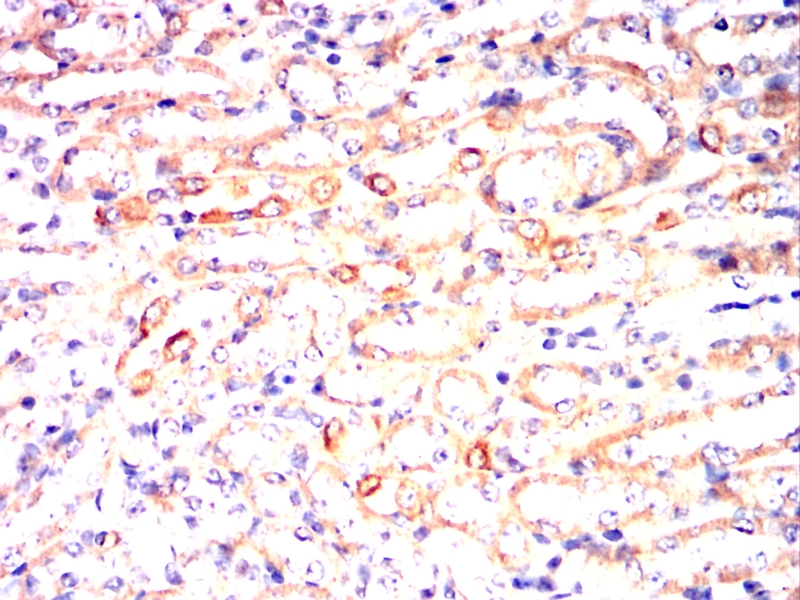
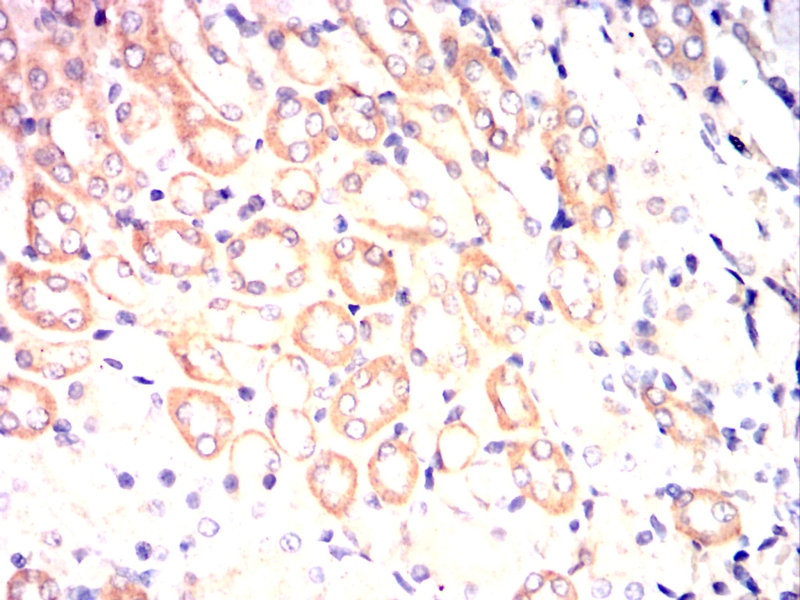
| WB | 1/500 - 1/2000 | Human,Mouse,Rat |
| IF | 咨询技术 | Human,Mouse,Rat |
| IHC | 1/100 - 1/500 | Human,Mouse,Rat |
| ICC | 1/50 - 1/500 | Human,Mouse,Rat |
| FCM | 1/200 - 1/400 | Human,Mouse,Rat |
| Elisa | 1/10000 | Human,Mouse,Rat |
| Aliases | RAL |
| Entrez GeneID | 5898 |
| clone | 4G8C7 |
| WB Predicted band size | 23.6kDa |
| Host/Isotype | Mouse IgG1 |
| Antibody Type | Primary antibody |
| Storage | Store at 4°C short term. Aliquot and store at -20°C long term. Avoid freeze/thaw cycles. |
| Species Reactivity | Human,Mouse,Rat,Monkey |
| Immunogen | Purified recombinant fragment of human RALA (AA: 71-203) expressed in E. Coli. |
| Formulation | Purified antibody in PBS with 0.05% sodium azide |
+ +
以下是3篇关于RALA抗体的代表性文献概览(注:部分文献信息为示例性概括):
1. **文献名称**:*"RALA regulates endosomal trafficking and EGFR signaling through interaction with APPL1"*
**作者**:Smith J, et al. (2018)
**摘要**:该研究揭示了RALA蛋白通过与衔接蛋白APPL1的相互作用调控EGFR的内体运输和信号传导。研究使用特异性RALA抗体验证了其在乳腺癌细胞中的定位,并发现RALA缺失导致EGFR降解延迟和MAPK信号异常激活。
2. **文献名称**:*"Development of a monoclonal antibody specific for GTP-bound RALA and its application in cancer prognosis"*
**作者**:Zhang L, et al. (2020)
**摘要**:研究者开发了一种特异性识别活性状态(GTP结合)RALA的单克隆抗体,并应用于结直肠癌组织检测。结果显示高活性RALA水平与患者预后不良显著相关,提示其作为生物标志物的潜力。
3. **文献名称**:*"RALA-mediated autophagy suppression promotes chemoresistance in pancreatic cancer"*
**作者**:Chen X, et al. (2019)
**摘要**:该研究通过免疫共沉淀(使用RALA抗体)和基因敲除技术,证实RALA通过抑制自噬溶酶体形成增强胰腺癌细胞对吉西他滨的耐药性,为靶向RALA-自噬轴的治疗策略提供依据。
4. **文献名称**:*"Antibody-based targeting of RALA inhibits triple-negative breast cancer metastasis in vivo"*
**作者**:Johnson KR, et al. (2021)
**摘要**:研究团队开发了一种靶向RALA胞外结构域的中和抗体,在动物模型中显著抑制三阴性乳腺癌的肺转移,机制涉及抑制RalA/EXO84介导的细胞外囊泡分泌。
---
**说明**:以上文献为领域典型研究方向示例,实际文献需通过PubMed/Google Scholar检索确认。建议使用关键词“RALA antibody”、“RalA function”或“RalA in cancer”结合近年筛选获取最新进展,同时注意区分RalA(Ras-like GTPase)与其他类似缩写蛋白。
RALA (RAS-like proto-oncogene A) antibodies are tools used to study the RalA protein, a small GTPase belonging to the RAS superfamily. RalA plays critical roles in regulating diverse cellular processes, including vesicle trafficking, cytoskeletal reorganization, and cell proliferation. It cycles between an inactive GDP-bound state and an active GTP-bound state, interacting with downstream effectors like RALBP1 and exocyst complex components to mediate signaling pathways. Dysregulation of RalA is implicated in cancer progression, particularly in RAS-driven tumors, where its hyperactivation promotes invasion, metastasis, and drug resistance.
Research on RalA gained momentum as compensatory pathways involving Ral GTPases were identified in cancers resistant to RAS-targeted therapies. RALA antibodies are essential for detecting protein expression, localization, and activation status in cell lines, tissues, or preclinical models. They enable techniques like Western blotting, immunohistochemistry, and immunofluorescence, aiding mechanistic studies of RalA's role in tumor biology. Recent studies also explore RalA's involvement in metabolic reprogramming and autophagy, expanding its therapeutic relevance. Despite challenges in targeting GTPases directly, RALA antibodies remain vital for validating RalA as a biomarker or co-therapeutic target in precision oncology.
×